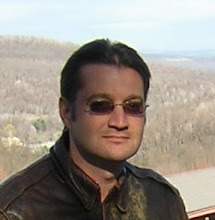The upcoming special election for MoCo’s District 4 County Council seat is important for two reasons. First, it is the first time a council member other than Marilyn Praisner will represent the district. Second, it will decide the close balance of power on the council, especially on issues related to growth. And so we offer special coverage of this race here at Maryland Politics Watch.
Montgomery County Council District 4 was created in 1990, along with the four other council districts. Prior to that time, the council had seven members, all of whom were elected at-large. In 1990, the present system was set up assigning one council member to each of five districts, with four others running at-large. The districts roughly mirror the county’s population distribution with Council District 4 covering East County.
Geography
District 4’s boundaries are (roughly) the county line on the northeast and east, the outskirts of Olney and Brookeville on the north, Rock Creek and Veirs Mill Road on the west and Randolph Road, Four Corners and US-29 on the south. You can view the official district map here.
The district contains two distinct sub-sectors. The western sector includes the neighborhoods between the northern reaches of Wheaton and the southern outskirts of Olney. Much of this sector is accounted for by Aspen Hill. The eastern sector includes the US-29 corridor from White Oak to Burtonsville as well as the areas near the Howard County border. The dividing line between the sectors is New Hampshire Avenue. We make this distinction because these two sectors have very different demographics, as we shall see below.
There are no urbanized downtowns in District 4. The vast majority of the district is covered by single-family neighborhoods with only one Metro station (Glenmont) that is very close to the District 5 border. There are a few commercial strips along Georgia Avenue and Layhill Road in the west, US-29 and Cherry Hill Road in the east, and New Hampshire Avenue. But the lack of density robs the district of any centrally-recognized locations of social, political or civic activity.
Demographics
District 4 conforms fairly closely to the Census Bureau’s Public Use Microdata Areas (PUMAs) 01005 and 01006. (Those areas, however, include part of Kensington and exclude part of the area along the Howard County border, so they are not a perfect fit.) According to Census, the two PUMAs had a population of 236,844 in 2006. The population was 44% white non-Hispanic, 26% black non-Hispanic, 17% Hispanic and 11% Asian non-Hispanic. Two-thirds of the population is native-born while one-third is foreign-born. Of the 33% foreign-born, almost two-thirds (19%) are non-citizens. Forty percent of the district’s population speaks a language other than English at home. Median household income is $74,656, lower than the county’s average ($87,624). Forty-one percent of MoCo’s black population lives in this district.
There are significant demographic differences between the two sub-sectors. On the western side, which includes Georgia Avenue, Aspen Hill and most of Layhill Road, the population was 51% white non-Hispanic, 17% black non-Hispanic, 21% Hispanic and 8% Asian non-Hispanic. The median household income was $70,170. On the eastern side, which includes the US-29 corridor along with Colesville, the population was 37% white non-Hispanic, 35% black non-Hispanic, 11% Hispanic and 14% Asian non-Hispanic. The median household income was $80,043. So the western part of the district is whiter, more Latino, and relatively poorer than the eastern side. On the eastern side, the black population almost equals the white population, Latinos are not as numerous and the residents are nearly as wealthy as the county average.
Politics
The natural breeding grounds of politicians are municipalities and civic associations. District 4 does not have any municipalities and its civic associations are generally not as well-organized as those closer to Downtown Silver Spring and the I-270 corridor though there are a few exceptions). Those factors combined with the lack of urban density and the long dominance by Mrs. Praisner have created something of a political vacuum in the district. Mrs. Praisner had no real rivals and no designated successors.
The population’s racial diversity is not well reflected by its politicians. State Legislative District 14, which accounts for much of the eastern side of the district, is represented by three white women and one black man. State Legislative District 19, which accounts for much of the western side, is represented by four white men. Mrs. Praisner was the only County Council Member who lived in County District 4. However, there is one important exception to the above rule: County Executive Ike Leggett, who served four terms as an at-large member of the council, is a Burtonsville resident.
Dan Reed’s outstanding East County blog Just Up the Pike provides a good feel for East County. Dan paints a picture of a community handicapped by lack of transit, car-oriented neighborhood design and a general lack of commercial amenities. His series on the Briggs Chaney area provides one example. Dan’s interview with Mrs. Praisner also touches on these issues.
But East County’s large and diverse population and its links to both Wheaton and Silver Spring tie it firmly into the rest of the county. Mrs. Praisner, an unusual thinker who could handle both big-picture concepts and excruciatingly minute details, understood this very well. She was a capable defender of the area’s priorities but also a serious player on countywide issues. Whoever follows her will require quite some time to match her stature.
In Part Two, we’ll look more closely at the district’s political playing field.
Wednesday, February 20, 2008
County Council District 4 Special Election Preview, Part One
Subscribe to:
Post Comments (Atom)


No comments:
Post a Comment